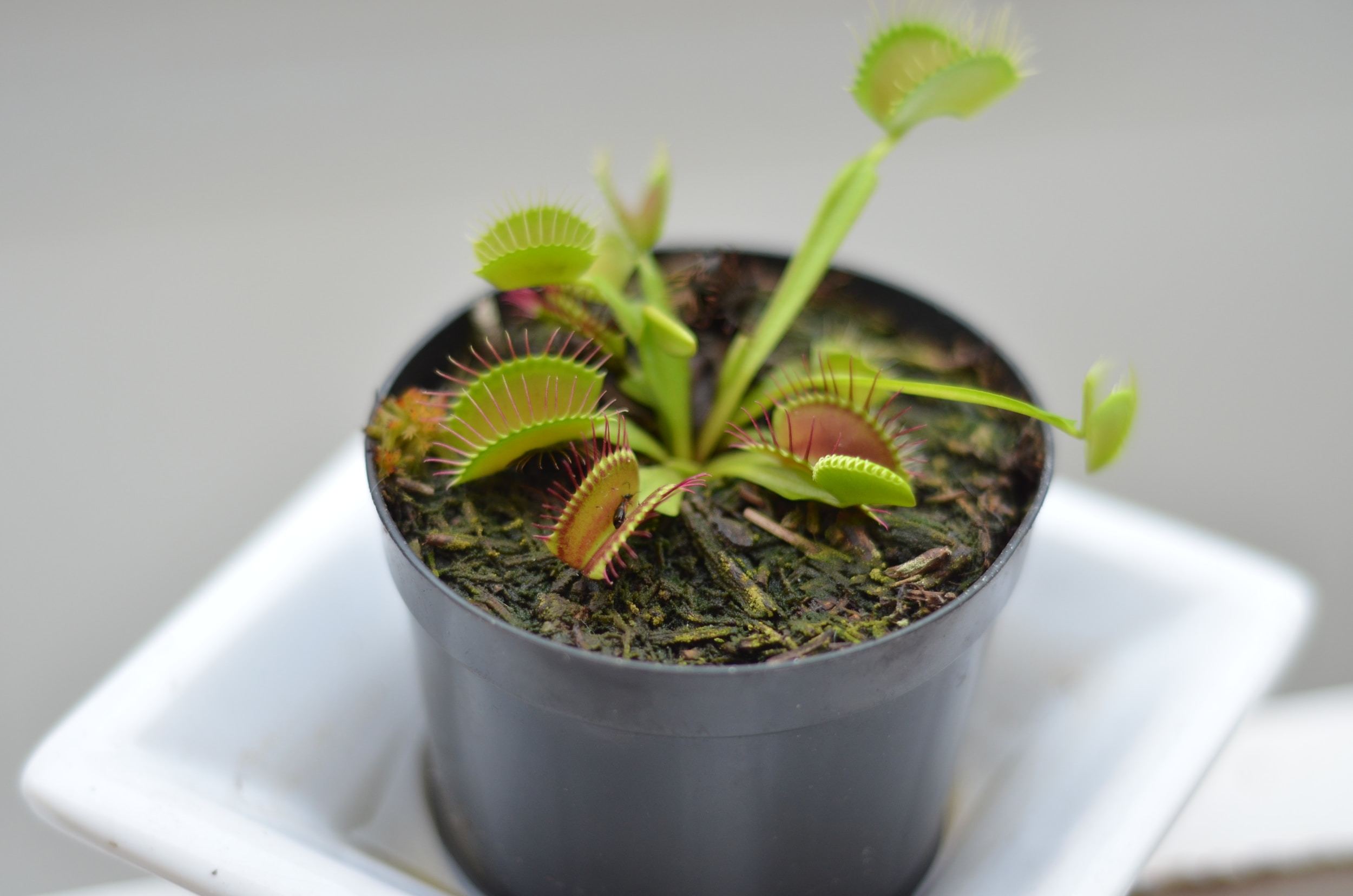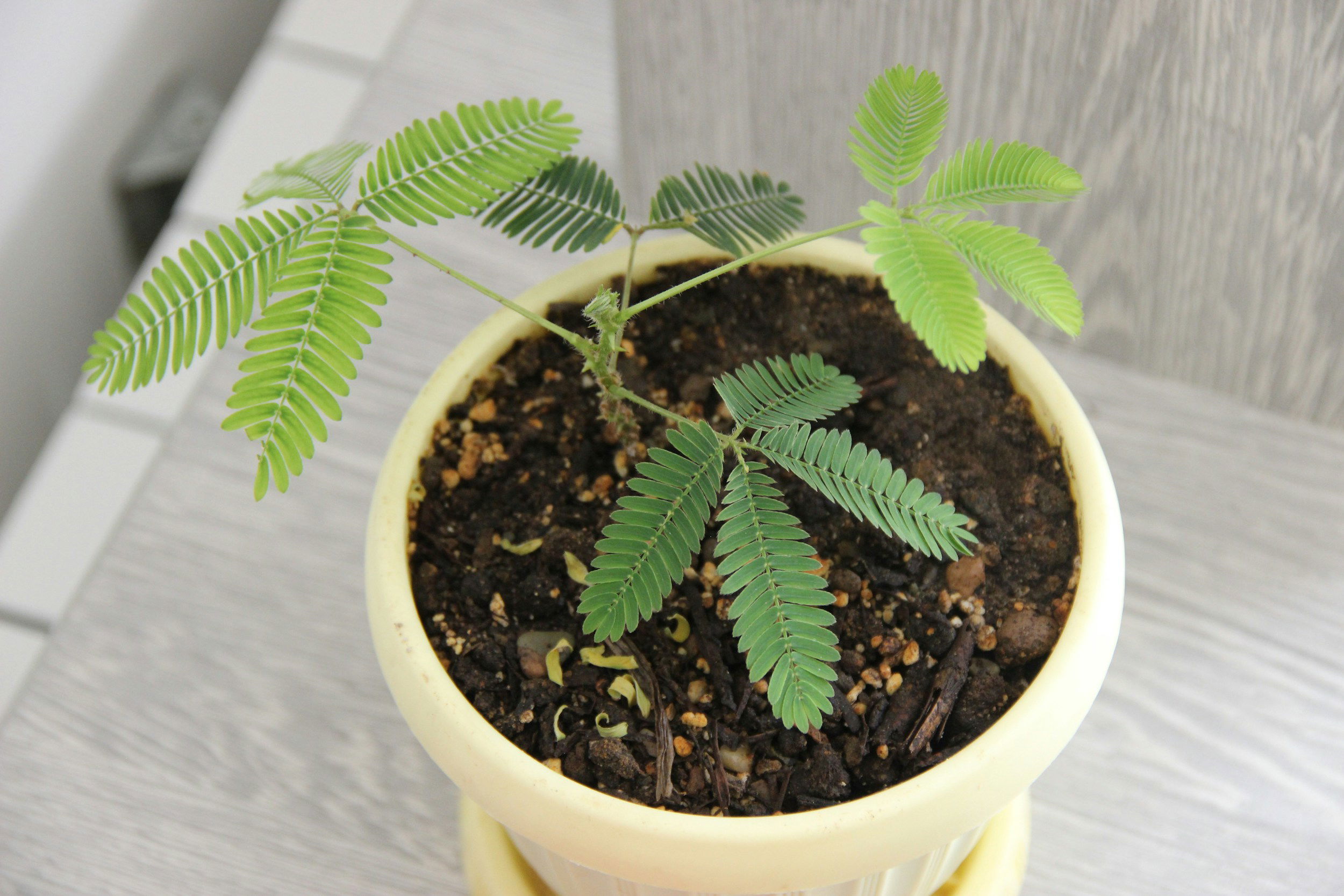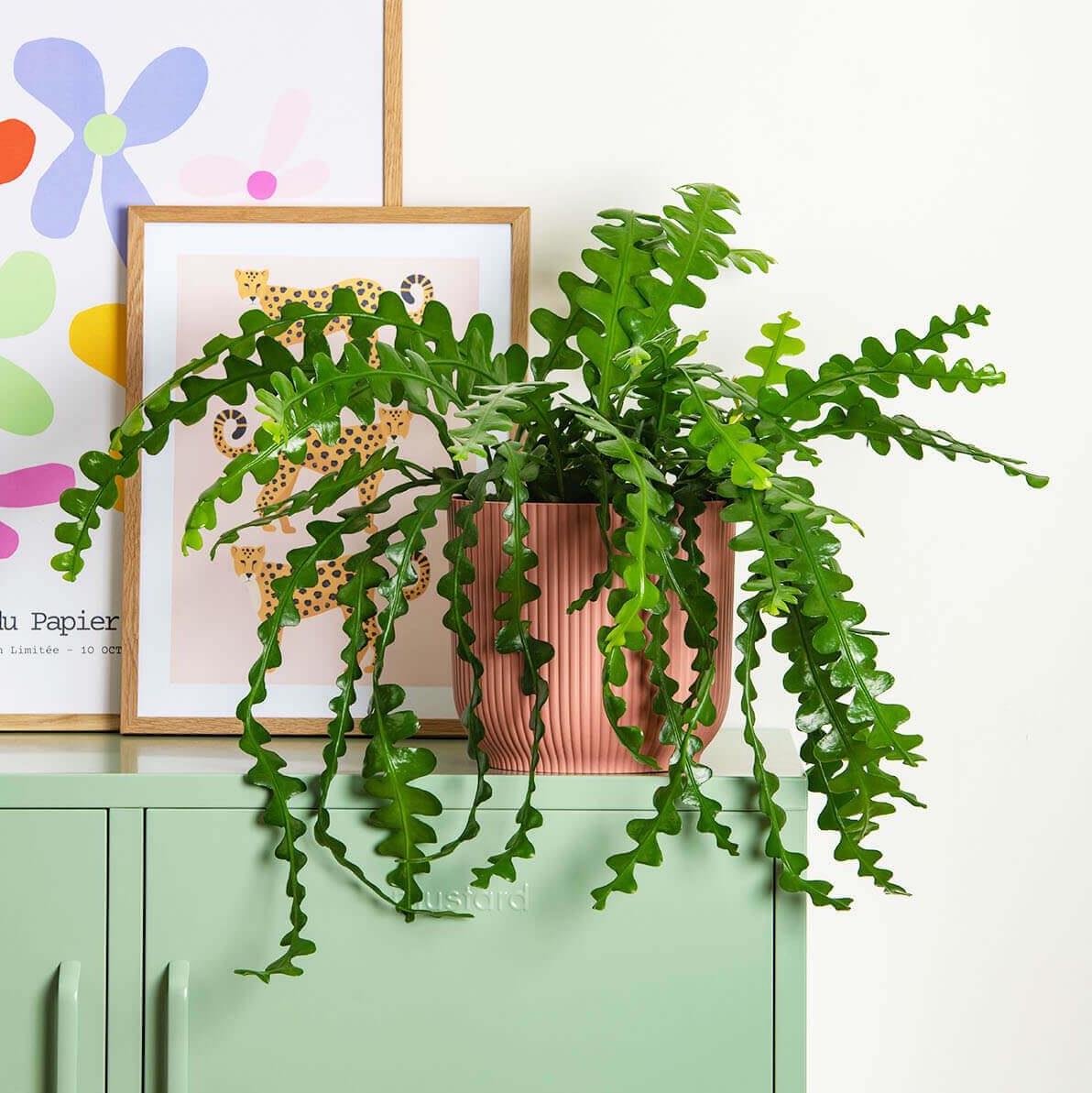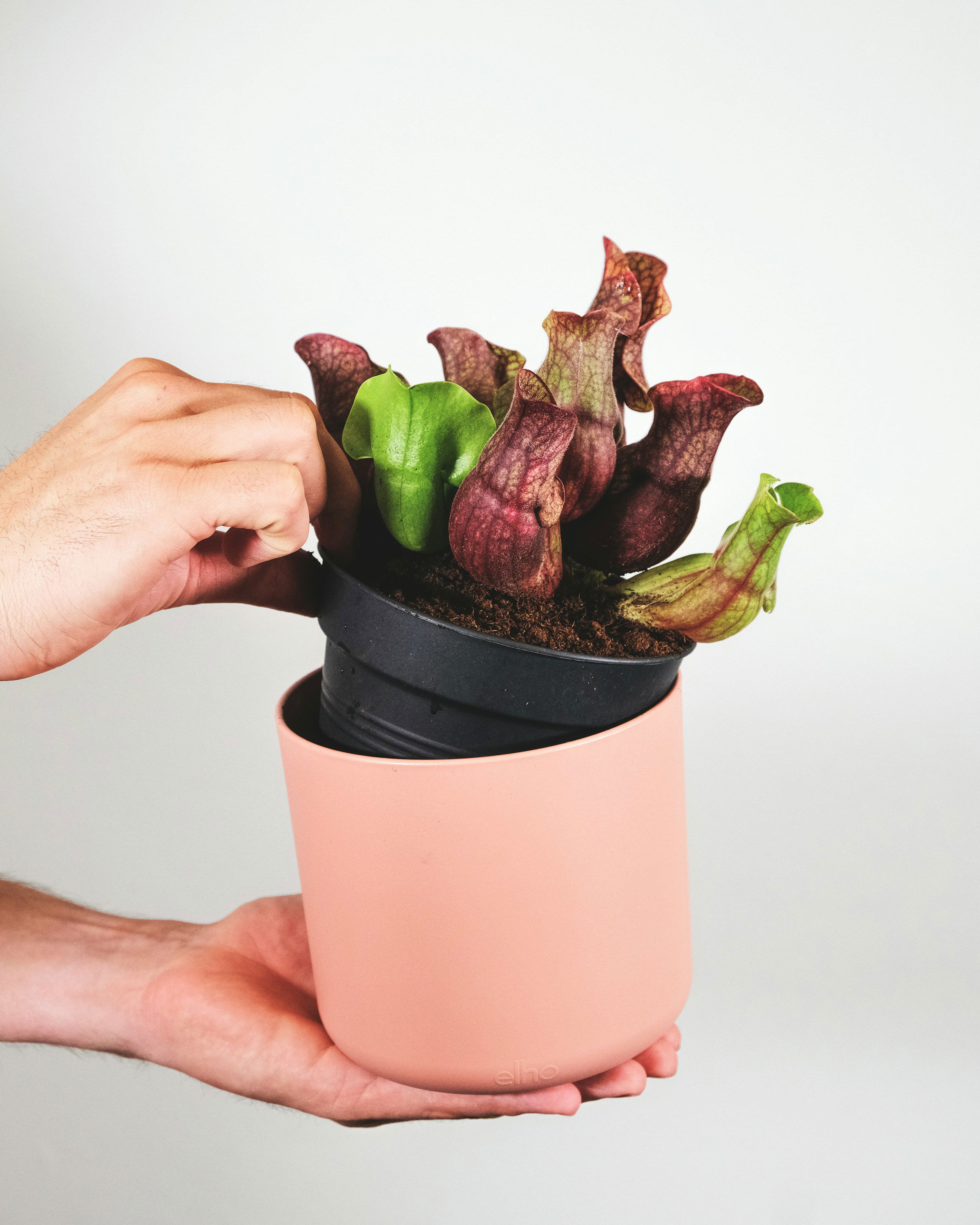Introduction
Lifelong hobbies can be born at an early age. Most of us will have memories with our parents, grandparents or elders who show us a hobby of theirs, only for this passion to grace our everyday lives later down the line. Houseplants are a great way to form a close bond to a child as there are several species and varieties that'll open their mind to the incredible world of plant behaviours.
3 Quick Tips for Children to Learn for Houseplant Success!
- Over-watering is the biggest problem with plants. For every houseplant except Cacti & Succulents, remember to only water the plant once when the soil feels dry when touched. Use lukewarm water and mix in some 'Houseplant' labelled feed every third water (plant food is very important!).
- For Cacti, Succulents & Carnivorous Plants (like Venus Fly Traps), keep them on a windowsill so they'll receive enough natural lighting. Only water its compost once it is fully dry - once a month is good!
- Don't over touch plants that might 'move' when you touch them (like Venus Fly Traps or Sleeping Grass). This will reduce their energy levels, meaning they won't produce new leaves and may become weak over time.
Searching for suitable plants for your children or pupils? Book a 1-to-1 consultation with Joe Bagley, THE HOUSEPLANT DOCTOR™ & website author, to guide you with choosing the right plants & where to find them at their cheapest price. Available on iMessage/FaceTime, WhatsApp & more!
Which Houseplants Are Fun For Children?
1. Venus Fly Traps
Care Difficulty: Difficult (to keep for more than a year, but not impossible!)
Why Will A Child Like Venus Fly Traps?: Their mind-blowing traps... What else can I say?! Each trap will shut when two of the little hairs within the 'mouth' is triggered. Fun Fact: These plants can distinguish the difference between a insect's touch and one from a raindrop!
Watering: Maintain evenly moist soil using rainwater, or tap water that has been boiled (& cooled before pouring into its compost).
Feeding: Do not feed using any fertiliser. They'll get their 'food' from the sun on a bright windowsill and catching the occasional insect. East, south or west-facing windowsills are best.
Pruning: Generally not needed; keep the dead leaves attached on the plant to avoid stress.
Annual Growth: Slow (four to five leaves per year. The leaves will have the 'traps' on their tips.)
Where to Buy: Garden centres, DIY stores & online stores.
Toxic? No
2. Tradescantia 'Nanouk'
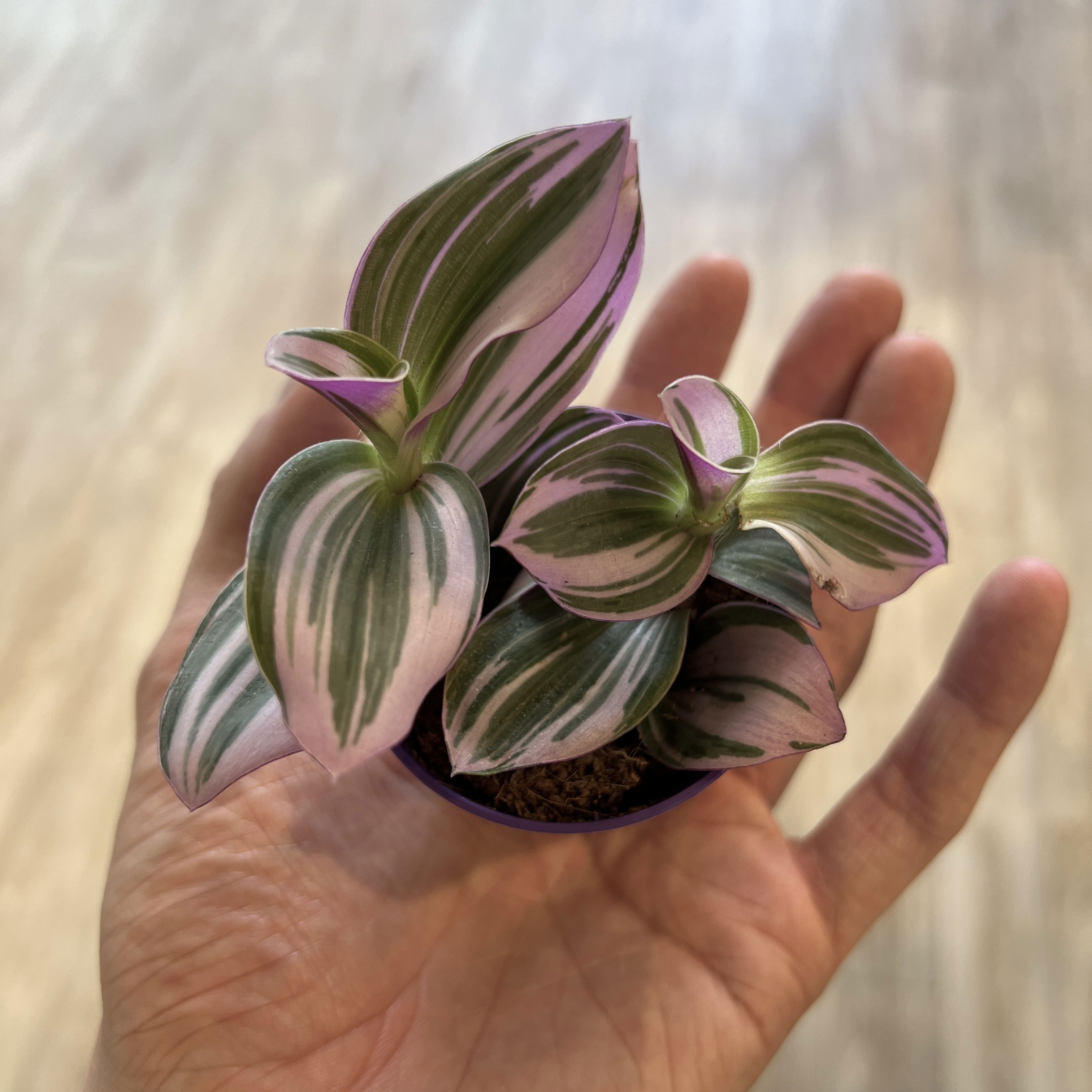
Care Difficulty: Very Easy
Why Will A Child Like Tradescantia?: Their stunning naturally-occurring foliage patterns.
Watering: Only rehydrate once the soil feels dry to the touch. Keep this plant within 2m of a window.
Feeding: Fertilise every third time you water the soil with a 'Houseplant' labelled product.
Pruning: Not necessary unless you want to keep the plant's size controlled. In that case, during the spring prune the stems back by a third to promote a bushier appearance. Feel free to propagate the prunings in water to grow-on!
Annual Growth: Fast (10-20cm per year)
Where to Buy: Garden centres, DIY stores & online stores.
Toxic? No
3. Mimosa - Sleeping Grass
Care Difficulty: Easy
Why Will A Child Like Mimosa?: Their leaves fold up when you touch them, as well as at night!
Watering: Keep them moist at all times and provide a bright windowsill with no direct sunlight.
Feeding: Mix some feed in with every second water using a 'Houseplant' labelled fertiliser.
Pruning: Not necessary, but you can cut off any yellowing leaves over the year. This plant is an 'annual', meaning that they'll only grow for a year before dying. This is similar to some garden plants if you're familiar with the outdoors!
Annual Growth: Rapid (50cm per year, or more!)
Where to Buy: Garden centres & online stores.
Toxic? Don't eat the leaves & can have thorns on its stems.
4. Fishbone Cacti
Care Difficulty: Very Easy
Why Will A Child Like Fishbone Cacti?: Drought tolerant so minimal care will be enough for this plant. And who can forget these stunning natural zig-zags?!
Watering: Let most of the soil dry out in between waterings. This plant is tolerable to droughts, so don't worry if you forget to water sometimes!
Feeding: Fertilise every fourth time you water the soil with a 'Houseplant' labelled product.
Pruning: Not necessary unless you want to keep the plant's size controlled. In that case, during the spring prune the vines back by a third to promote a bushier appearance. Feel free to propagate the prunings in water to grow-on.
Annual Growth: Moderate (6-10cm per year)
Where to Buy: Garden centres, DIY stores (B&Q) & online stores.
Toxic? No
5. Spider Plants
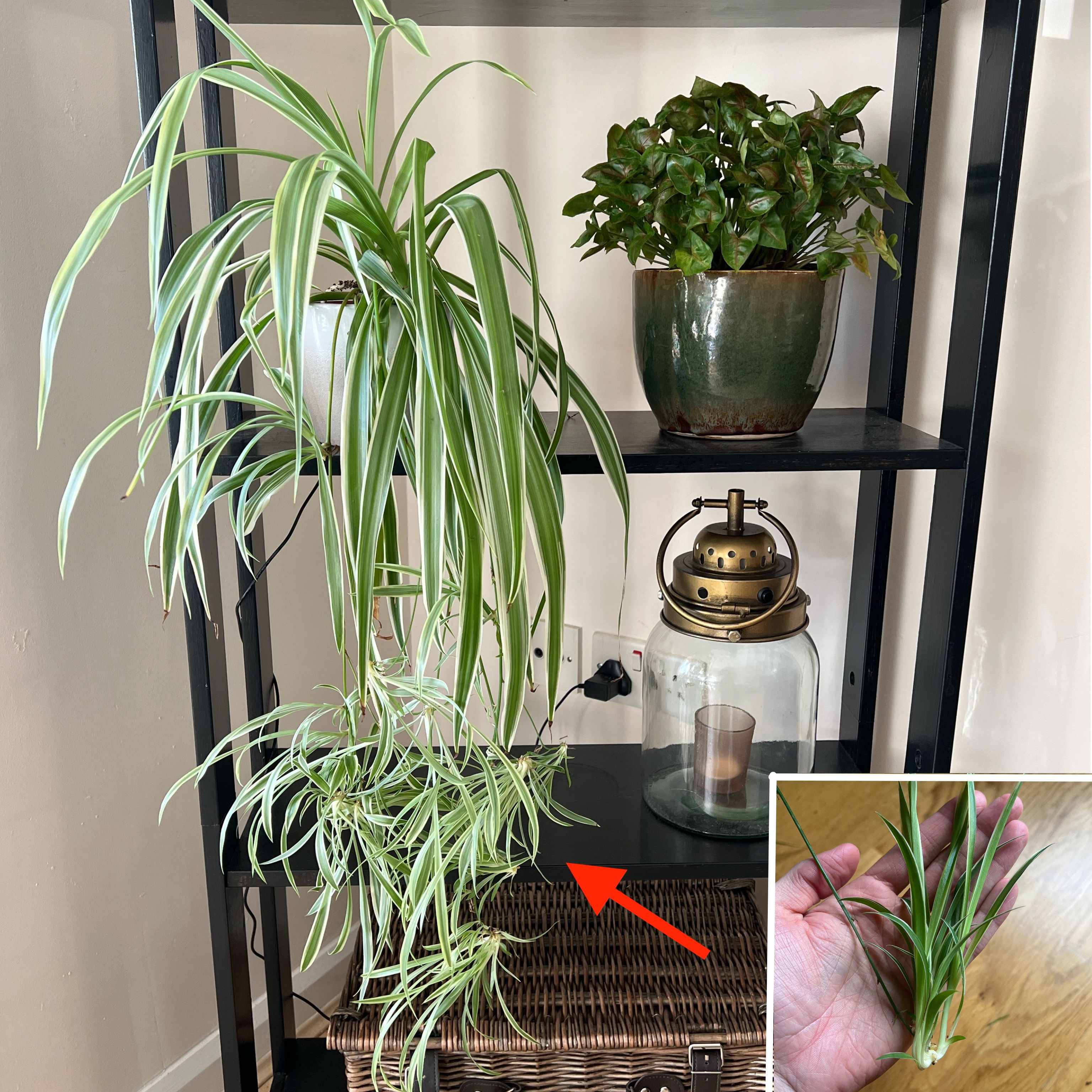
Chlorophytum comosum (left on shelf & bottom-right)
Care Difficulty: Very Easy
Why Will A Child Like Spider Plants?: This plant will produce small plantlets (called 'pups') which can be split off and rooted in water to start an entirely new plant. This will teach kids about propagation, along with rewarding them with a small plant that'll grow into an adult.
Watering: Allow most of the soil dry out in between waterings; THE HOUSEPLANT DOCTOR™ recommends watering the soil once every ten days, or when the leaves look a little grey & wilted. This plant is tolerable to droughts, so don't worry if you forget to water though!
Feeding: Mix in some 'Houseplant' labelled feed every third water, all year round.
Pruning: Not necessary unless you want to keep the plant's size controlled. In that case, during the spring prune the vines back by a third to promote a bushier appearance. Feel free to propagate the prunings in water to grow-on.
Annual Growth: Moderate (6-10cm per year)
Where to Buy: Garden centres, DIY stores (B&Q) & online stores.
Toxic? No
6. Pitcher Plants
Care Difficulty: Easy
Why Will A Child Like Pitcher Plants?: Strange looking plant, right?! This is the second carnivorous plant on THE HOUSEPLANT DOCTOR™'s list and is one that's fascinating to learn about. The pitcher is a modified leaf that's formed into a cylindrical hollow tube, interiorly lined with downward pointing 'hairs' that proves slippery when an insect gets lured into the pitcher due to the various attractive scents the plant emits. After a few years of hard work, a pitcher in the wild can be almost 50% FULL of dead insects!
Watering: Maintain evenly moist soil using rainwater, or tap water that has been boiled (& cooled before pouring into its compost). For those who are forgetful waterers, you can sit its pot in a small reservoir of water around 25% deep. Provide a sunny windowsill or conservatory.
Feeding: Do not feed using any fertiliser. They'll get their 'food' from the sun on a bright windowsill and catching the occasional insect. East, south or west-facing windowsills are best.
Pruning: Generally not needed; keep the dead leaves attached on the plant until it has fully crisped over.
Annual Growth: Slow (three to four pitchers per year).
Where to Buy: Garden centres, DIY stores & online stores.
Toxic? No
7. Monkey Mask Plants (Monstera adansonii)
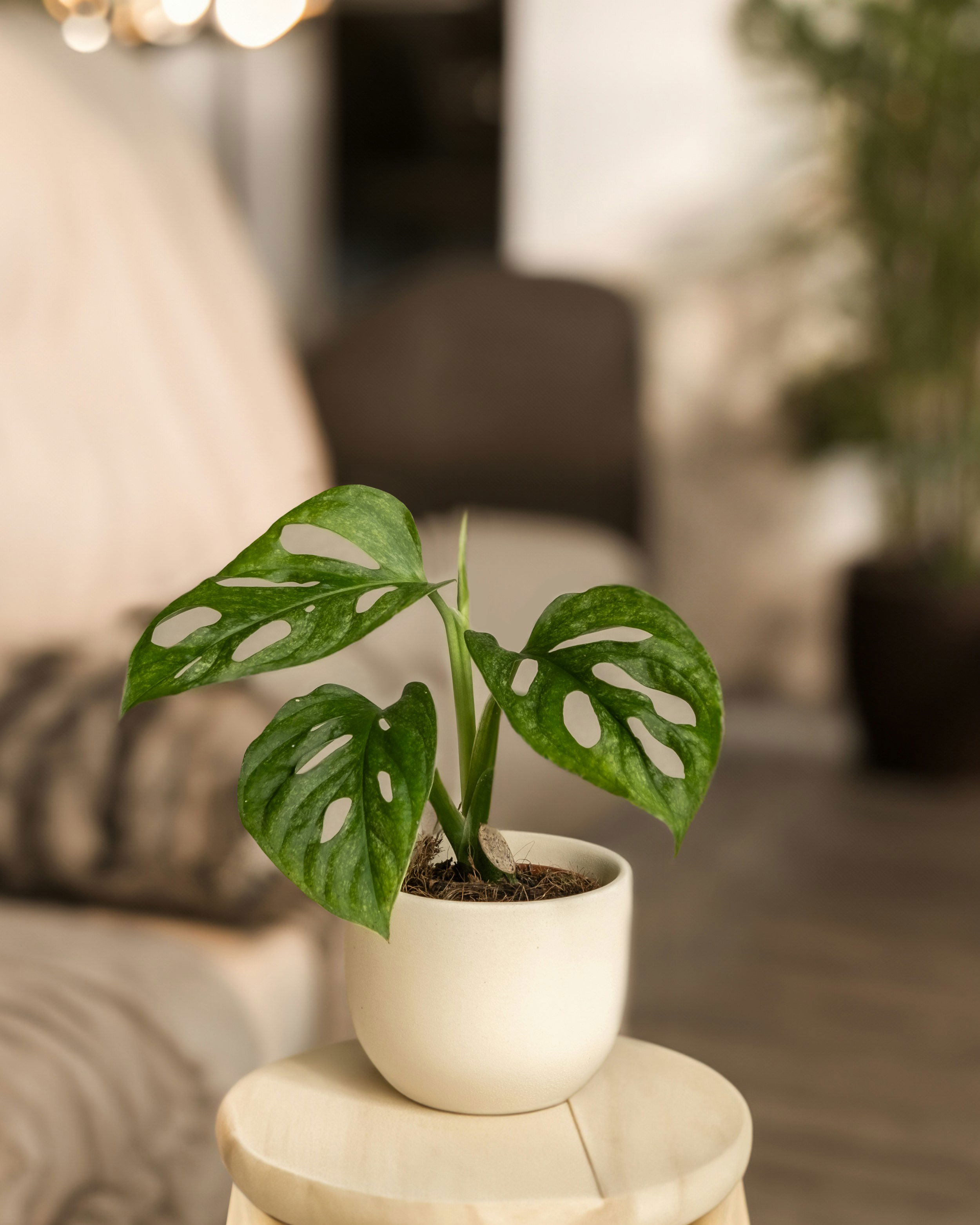
Care Difficulty: Easy
Why Will A Child Like Monkey Mask Plants?: Being a member of the 'Monstera' gang, this plant will also sport the tropical holed-foliage that others will develop. What's better is this plant's ability to grow in almost all light levels and is rather tolerable to under and over-watering. Take cuttings once a year with 12cm length prunings and root in water; you can then pot them up in soil once their roots are around 5cm in length to double your Monkey Mask stock!
Watering: Allow the top third of the soil to dry in between waters. Either check the soil for dryness using your fingers or check the weight of the pot by lifting it (heavy pots means there is still moisture in the soil, so don't water yet!).
Feeding: Feed every third water using a 'Houseplant' labelled feed, all year round.
Pruning: Prune off yellowed or browned leaves as they decline in health. Take stem cuttings once a year in spring to keep the plant in a manageable size.
Annual Growth: Fast (Five leaves or more per year. Up to 40cm in length per year). This plant is mostly a trailing species, but you can train it up a wall (with self-adhesive hooks) or along a moss pole.
Where to Buy: Garden centres, DIY stores & online stores.
Toxic? Yes
8. Lithops (Living Stones)
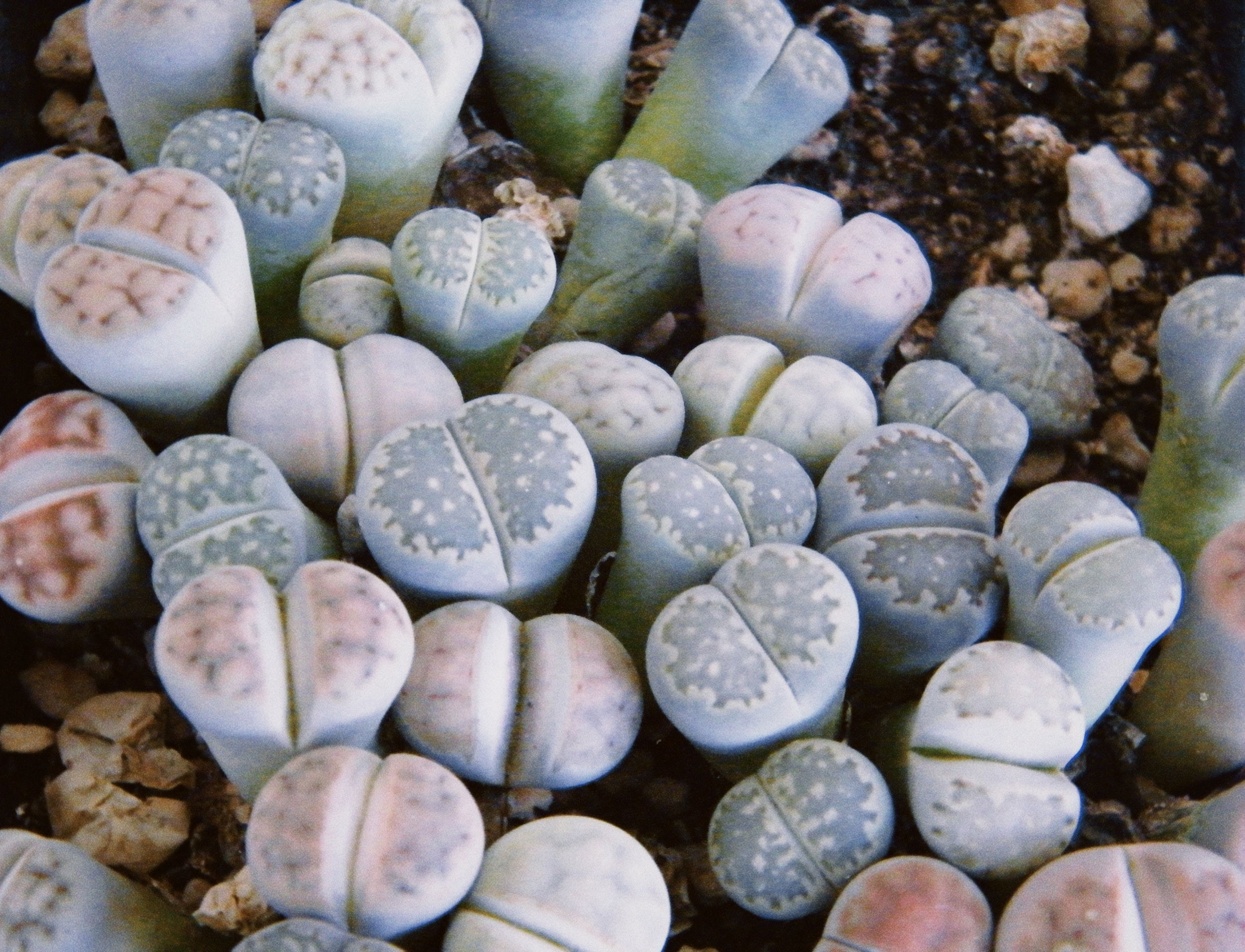
Care Difficulty: Moderate
Why Will A Child Like Lithops?: These funky 4cm plants have evolved to mimic local rocks in their natural habitats of Africa. They do this to 'blend in' with the surroundings so that predators can't see them, along with protecting themselves within the knocks of nearby rocks from the sun's harsh rays.
Watering: Only water the soil when the leaves feel a little 'squishy'. They are excellent at drought tolerance so try not to over-water!
Feeding: Fertilise every three months using a 'Houseplant' labelled feed.
Pruning: Generally not needed; keep the dead leaves attached on the plant to avoid stress.
Annual Growth: Slow (One pair of leaves per year)
Where to Buy: Garden centres & online stores.
Toxic? No
9. Oxalis Triangularis

Care Difficulty: Easy
Why Will A Child Like Venus Fly Traps?: Apart from the deep purple tone of its foliage, the plant does something rather unique, too. In the day, the leaves will face flat towards the light, but as night falls, the foliage will 'fold' in an umbrella shape. Botanists don't know exactly why this is the case, but they believe it could be to give the impression that the plant is 'wilting' or 'weakened', as most of its predators are likely to attack/eat its leaves at night.
Watering: Allow the top third of the soil to dry out in between waters and provide a windowsill for optimal growth. Some sunlight is beneficial for the plant, too; so an east or west-facing window is perfect.
Feeding: Mix in some 'Houseplant' labelled fertiliser every third water throughout the year.
Pruning: Prune off any yellowing or crisping foliage. The flowers will fold-up at night (like the foliage), but will drain the plant's energy from producing more leaves in the future. Snip the blooms if you're not too fussed about the flowers! Click here to learn about its dormancy period (if the plant loses all of its leaves during winter).
Annual Growth: Rapid (ten leaves per year. Note that this plant's ultimate height is only 30cm, so it'll just become more 'bushier' over time).
Where to Buy: Garden centres & online stores.
Toxic? No
10. Terrariums
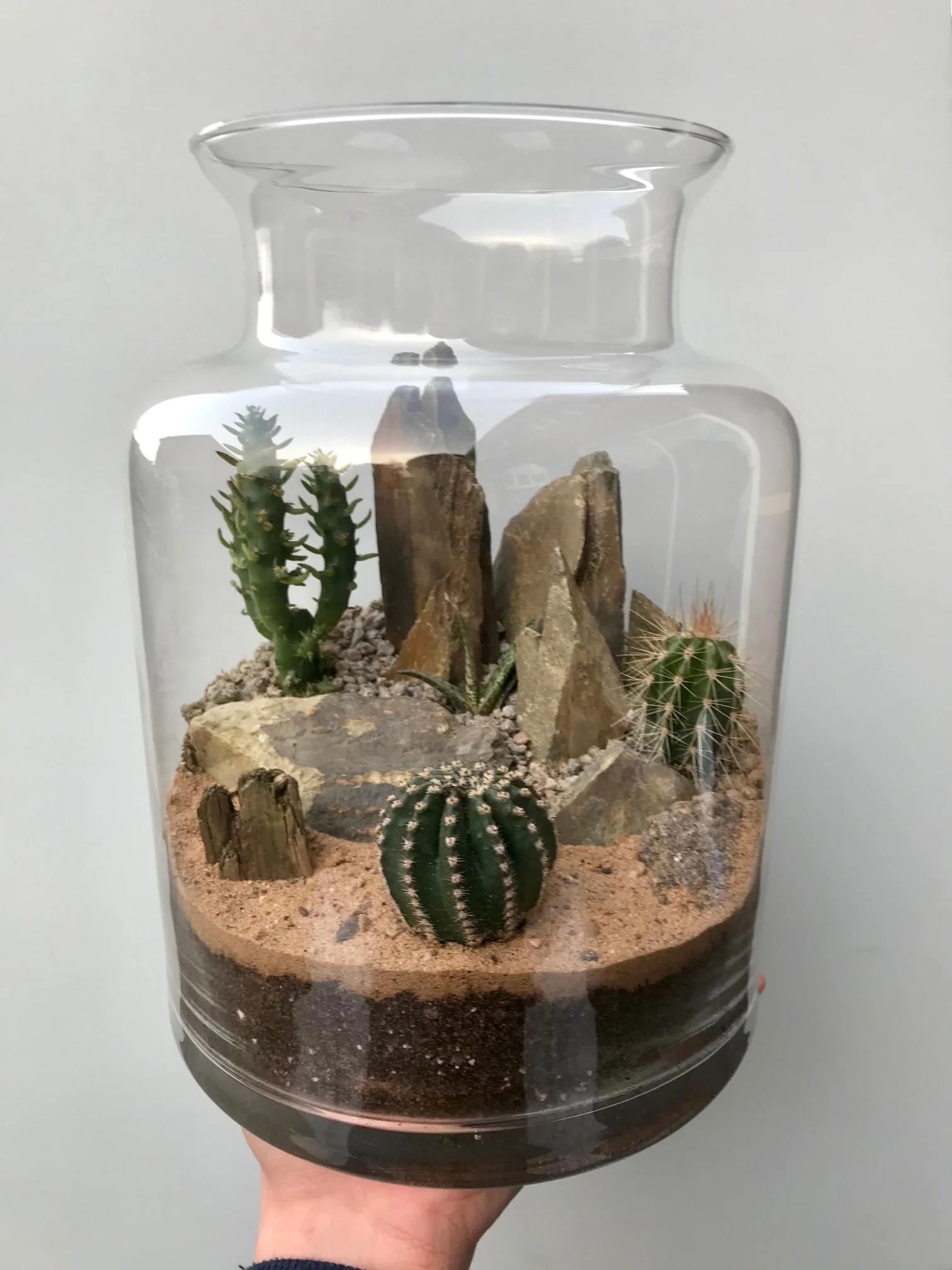
Creation Difficult: Easy
Care Difficulty: Easy
Why Will A Child Like Making a Terrarium?: Great for mindfulness and taking some time away from the digital world. Terrariums like this look difficult to make but it's absolutely not; click on this link to learn how to make a display of your own!
Watering: Don't over-water due to the lack of drainage holes. Pools of water accumulating within the terrarium's soil will result in root rot. View THE HOUSEPLANT DOCTOR™'s article on Terrarium Care here!
Feeding: See the link above for more information!
Pruning: Reduce any overgrown plants by around a quarter, snipping the tips of the stems back with a part of scissors.
Where to Buy: Terrariums from TKMaxx or online, soil from ukhouseplants, small 6cm 'tot plants' from UK garden centres like Blue Diamond.
Toxic? Generally no, but check each plant you use beforehand.
Other honourable mentions for children;
- Swedish Ivy (Plectranthus verticullatus) [Easy Care]
- Cress [Quick Growth]
- Herbs such as Basil, Chives & Coriander. [Edibles]
- Pineapple Plants [Fun & Edible]
- Parlour Palms [Easy Care]
- Christmas/Thanksgiving Cacti [Easy Care & Flowers in Early Winter]
Book a 1-to-1 Consultation with THE HOUSEPLANT DOCTOR™
Need advice for choosing the best houseplants tailored for your lifestyle? Book a video or message consultation with expert Joe Bagley, THE HOUSEPLANT DOCTOR™ (author or ukhouseplants.com). Choose between a ten or thirty-minute session & a platform of your choice (WhatsApp, FaceTime, Facebook Messenger or Zoom). Ask unlimited questions in one session, including queries on your dying/challenging plants, pests eradication, terrariums, repotting advice & everything in between! Available worldwide.
